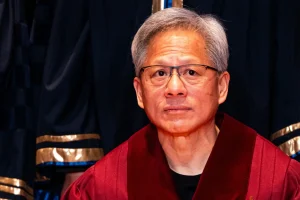Will Trump’s Return Spell the End for Chinese EVs?
When Trump narrowly escapes a fatal shot to his head, the global political landscape could shift in an instant. A week later, Biden announces his withdrawal from the presidential race, and Trump’s chances of winning skyrocket.
If Trump comes back, the global political and economic outlook will be shrouded in greater uncertainty, including for the auto industry.
In the U.S., the push for automotive electrification might face significant setbacks, while America’s allies may have to deal with Trump’s betrayal in favor of bringing manufacturing back home. Meanwhile, China is on high alert, preparing for further decoupling.
The global auto industry is preparing for the return of that man.
Reversing Course Amid Political Manoeuvres
As we all know, Trump is an opponent of electric vehicles (EVs).
On July 18, Trump declared at a Republican rally that if elected, he would immediately revoke the “electric vehicle mandate.”
“The current administration is pushing a ‘green scam.’ On my first day in office, I will end the EV mandate, saving the American auto industry from total destruction and helping American consumers save thousands of dollars when buying a car,” he said.
Of course, there is no actual EV mandate in the U.S., but there are policies promoted by President Biden to support EV development, such as subsidies for charging infrastructure, lowering purchase costs, and favorable emission regulations.
For example, the Infrastructure Investment and Jobs Act allocates $7.5 billion for EV charging infrastructure subsidies. The Inflation Reduction Act (IRA) provides a $7,500 tax credit for EVs with batteries that meet certain criteria and are produced in North America.
Reuters reported on July 11 that the Biden administration plans to offer $1.7 billion in grants to upgrade 11 “at-risk” factories, aiming to increase annual EV production capacity by 1 million units, retain 15,000 existing jobs, and create 3,000 new positions. General Motors and Stellantis, the parent company of Chrysler, are expected to receive nearly $1.1 billion in grants.
However, according to Trump, developing EVs only benefits Mexico and China. To protect American interests and workers, he intends to take a stand.
Trump’s running mate Vance is even more extreme. Last year, he proposed the “Drive American Act,” which seeks to redirect the planned $7,500 EV subsidy to support the production of fuel-powered vehicles, thereby saving more auto workers’ jobs and wages.
Yet, it is also well-known that Trump doesn’t mind becoming a temporary EV supporter if the political and economic benefits are significant enough.
During his tenure, Trump supported the American EV startup Lordstown Motors because it acquired a factory that was about to close and promised to save local auto workers’ jobs.
 In 2020, Trump endorsed Lordstown EVs in front of the White House.
In 2020, Trump endorsed Lordstown EVs in front of the White House.
After Elon Musk formed a “Super Political Action Committee” to support Trump, the president’s attitude towards America’s largest EV company softened, and he even became a superfan of the Cybertruck.
Trump’s oscillation between being an EV opponent and supporter highlights his consistent political opportunism.
From the perspective of “votes are the ultimate truth,” auto workers, especially those in traditional auto industries under pressure from environmental policies, and the oil industry, have always been crucial voter bases for Trump.
If Trump is elected, he is more likely to reverse the progress of EV development made during Biden’s administration. This could include measures such as relaxing emission regulations, canceling or reducing EV purchase subsidies, and cutting subsidies for EV manufacturing plants, thereby restoring the competitive edge of fuel-powered vehicles.
As Trump’s support rises, American automakers must seriously consider the potential setbacks to EV initiatives if he returns to power.
On July 15, General Motors CEO Mary Barra stated that due to slowing market demand, the company would not meet its goal of producing 1 million EVs by 2025, and GM’s EV plans would be adjusted based on demand. Ford had already delayed the launch of new electric models earlier.
However, even though the transition to electrification may face further hurdles, Trump’s return might not be entirely negative for Detroit automakers’ financial reports.
Their EV businesses are suffering huge losses: Ford’s EV division lost $4.7 billion last year, and GM’s EV division lost $2.5 billion. However, their large fuel-powered vehicles are highly profitable. Due to high demand for the SuperDuty pickup, Ford recently invested $2.3 billion to upgrade its Oakville plant in Canada to expand production capacity—originally planned for EV production.
 Americans still feel that SuperDuty better symbolizes the American way of life.
Americans still feel that SuperDuty better symbolizes the American way of life.
Therefore, while Detroit automakers loudly proclaim their commitment to EVs, their short-term interests increasingly align with Trump’s anti-EV agenda.
On the other hand, Elon Musk, who publicly supports Trump, might face some losses if Trump wins—despite Musk’s claim that ending EV subsidies would benefit Tesla in the long run by hurting its American competitors’ EV businesses.
Uneasy South Koreans
Last year, Trump raised his arm in a rally at the United Auto Workers (UAW) strike, declaring, “If I return to the White House, the first thing I’ll do is repeal the IRA.” This announcement sent shivers down the spines of allies like South Korea.

Biden has been pushing the IRA bill with one goal being to establish a “de-China” EV supply chain with allies under the “America First” principle, striving to achieve the target of having EVs account for half of U.S. sales by 2030. However, Trump scoffs at this. His vision is solely “America Above All,” disregarding the previous administration’s commitments, allies’ interests, or the fate of EVs.
The IRA, signed in August 2022 and officially implemented in April last year, has been in effect for just 15 months. This flip-flopping has made ally companies, which chose to build local factories due to the IRA’s massive tax breaks and subsidies, extremely uneasy. South Korean battery manufacturers are particularly affected.
According to the IRA, to stimulate EV sales, the U.S. can provide a subsidy of up to $7,500, but it must meet two conditions:
40% of the critical materials used for battery production need to be mined or processed in the U.S. or in countries with which the U.S. has a free trade agreement.
At least 50% of battery components need to be produced or assembled in North America (U.S., Canada, and Mexico), with these percentage requirements increasing over the years.
This protectionist approach shattered the dreams of Chinese battery manufacturers entering the U.S. market but encouraged South Korean battery manufacturers, who have been losing ground in China in recent years.
Over the past two years, to grab a piece of the pie promised by Biden, South Koreans have been investing heavily in the U.S. In early 2022, LG Energy Solution announced a partnership with Stellantis to build a battery factory in Canada. At the end of the year, LG Energy Solution announced a $3 billion investment to build a cathode material factory in Tennessee, with an annual production capacity of 120,000 tons. Subsequently, Hyundai, in partnership with SK On and LG Energy Solution, announced the construction of factories in the U.S.
 LG Chem Vice Chairman Shin Hak-Cheol announced the plan to build a factory in Tennessee.
LG Chem Vice Chairman Shin Hak-Cheol announced the plan to build a factory in Tennessee.
These large projects have made the American EV industry look booming and have also brought significant benefits to South Korean manufacturers. In the first complete quarter after the IRA came into effect (Q3 2023), LG Energy Solution received over 215 billion Korean Won (approximately 1.1 billion RMB) in tax relief. In the first three quarters, it amounted to 426 billion Korean Won, while SK On received subsidies of 376 billion Korean Won. These two battery giants alone profited over 1.5 trillion Korean Won from the U.S. IRA last year.
At this rate, South Koreans were expecting to soon enjoy the good days of counting dollars effortlessly. However, the IRA, intended to curb China’s EV momentum and reduce the “Chinese content” in American EVs, has ensnared South Korean battery manufacturers.
If Trump fulfills his campaign promise to repeal the IRA on his first day in office, it would be a severe blow to South Korean battery manufacturers, especially SK On, which has been losing money for years and is on the brink of collapse. The South Korean companies’ massive investments of over a thousand billion Won in U.S. projects over the past two years would face an uncertain future, with payback becoming a distant prospect.
What worries South Koreans even more is Trump’s attitude towards imported cars. He believes that cars imported from South Korea, Japan, Europe, Mexico, and Canada contribute significantly to the trade deficit in the U.S. auto industry. Therefore, in addition to publicly stating his intention to repeal the IRA during this campaign, Trump plans to escalate the trade war by imposing a 10% tariff on all imported goods, including those from countries with which the U.S. has free trade agreements, like South Korea.
Currently, the U.S. imposes only a 2.5% tariff on passenger cars imported from South Korea. Raising it to 10% would severely impact South Korean car exports, as the U.S. accounts for nearly half of South Korea’s car exports.
Although Trump has never explicitly criticized South Koreans, his superficial understanding of fair trade suggests that he believes South Korean car companies have been taking advantage of Americans.
In 2023, South Korean car exports to the U.S. increased by 44.6% year-on-year, reaching $32.2 billion, a record high. Whole car exports reached 1.17 million units, surpassing the million-unit mark for the first time since 2015, with EV exports to the U.S. increasing by 62.3% year-on-year. In contrast, fewer than 20,000 new American cars were registered in South Korea last year.
In the first half of this year, South Korea’s total exports to the U.S. reached $64.3 billion, up 16.8% year-on-year, a record high, with car exports growing nearly 30%, becoming the biggest contributor. As a result, South Korea’s trade surplus with the U.S. continues to expand.
South Koreans initially thought they could capitalize on the IRA’s “money-spreading spree” by exporting South Korean EVs to the U.S. while benefiting from local factory investments. However, if Trump takes office, this dual-win vision will vanish entirely.
According to the Korea Institute for International Economic Policy, if Trump is elected and raises tariffs on U.S. exports by 10%, the total export value, including direct and indirect exports, could decrease by up to $24.1 billion.
South Koreans may not have anticipated that their enthusiastic response to the IRA, seen as a gesture of solidarity, could ultimately result in economic and financial losses due to a potential double-cross from their ally.
Of course, hurting South Korea might just be incidental. After all, Trump’s goals have always been clear.
Prepare for the Worst
This year, Trump has repeatedly called on Chinese car companies to build factories in the U.S., provided they employ American workers and produce locally. However, such invitations are hard for Chinese companies to interpret as anything other than a trap.
Previously, CATL helped Ford establish and operate a battery factory in the U.S. through technical licensing, attempting to mitigate various risks, yet it still couldn’t escape scrutiny from the U.S. Congress. TikTok serves as an even more cautionary tale. Due to immense political uncertainty, Chinese car companies and suppliers have essentially given up on launching new production and sales operations in the U.S.
Against this backdrop, Chinese car companies and supply chains are flocking to Mexico. In addition to exploring the Latin American market, another motive is leveraging the Biden administration’s friend-shoring policy, using Mexico as a springboard or transit hub to enter the North American market. For instance, Tesla’s preparation of a new Gigafactory in Mexico has attracted numerous domestic supply chain companies to follow suit.
 BYD unveiled its new energy pickup truck, the Shark, in Mexico.
BYD unveiled its new energy pickup truck, the Shark, in Mexico.
Mexican authorities and Chinese companies heavily invested in Mexico naturally do not want to see Trump take office. If Trump assumes power, his demand for manufacturing to return to U.S. soil could deliver a substantial blow to the Chinese auto industry’s strategy of entering the U.S. through Mexico. In June this year, a domestic think tank, “Liaowang,” issued a warning that “it’s only a matter of time and method before the U.S. closes off Mexico as a pathway for Chinese car companies to enter the U.S. market.”
Combining this with the EU’s recent imposition of high tariffs on Chinese electric vehicles, the global, especially high-value, auto markets are becoming increasingly closed to China’s aggressive overseas expansion. At this time, strengthening domestic circulation, expanding the domestic auto market, and fostering high-end local brands and high-value-added supply chains are more urgent.
The good news is that in the first half of this year, aided by new energy vehicles, domestic brands have achieved over 60% market share in the passenger car market, with domestic brands’ market share in the luxury car segment growing to 17.3% last year. However, celebrating prematurely is the greatest taboo.
The Chinese auto industry and relevant authorities must consider the possibility that if Trump takes office and plays the China card heavily, he could escalate the current 100% tariff on Chinese electric vehicles, further restricting the supply of key components to stifle the Chinese auto industry’s move towards intelligent electrification.
The most critical components, of course, are chips. The less optimistic news is that in the face of this urgent yet potential threat, the localization rate of Chinese automotive chips is still around 10%.
Within this 10% overall figure, the more specific situation is that in areas like power semiconductors, analog chips, and MCUs, which are relatively less complex and have lower process requirements, domestic design and manufacturing have made significant progress. For example, BYD, a vertically integrated company, was the largest domestic supplier of automotive IGBTs last year.
However, for more complex chips that require advanced processes, such as smart cockpit SoCs, autonomous driving SoCs, and cloud AI training chips, especially flagship chips that lead industry technology directions, American chip companies hold an absolute advantage. Examples include Qualcomm’s 8155/8295, NVIDIA’s Orin-X and the upcoming Thor, and NVIDIA’s A100 and H100.
Previously, to curb the development of the domestic AI industry, the U.S. had already banned the sale of high-performance training chips like the A100 and H100 to China. Even the 4090 gaming graphics card was unfortunately restricted due to its high computing density.
A Trump administration, unpredictable in its actions, could potentially expand the chip ban from the cloud to automotive sectors, and even from high-end to mid-to-low-end chips. This is an extreme scenario that domestic car companies must consider in supply chain management and product planning.
Partly due to this reason, domestic smart cockpit and autonomous driving chip companies like Horizon Robotics, Siengine, and SemiDrive have been securing increasing orders. Some new car-making forces and autonomous driving suppliers are also developing their own chips as backups. However, the danger remains as most of the above chips cannot avoid American semiconductor companies in terms of IP, and their production is mainly outsourced to TSMC.
 NIO developed its self-driving chip, the Shentong 9031.
NIO developed its self-driving chip, the Shentong 9031.
In a Bloomberg interview with Trump on July 16, Trump particularly criticized Taiwan’s chip industry, saying that “Taiwan has taken away all of America’s chip business.”
All signs indicate that Trump is an even more dangerous figure for the already delicate chip situation.
After this Bloomberg interview article was published, a document titled “Survey on the Localization Rate of Automotive Chips” circulated domestically. The document suggests that authorities recommend automotive companies increase the localization rate of MCUs, power semiconductors, memory, sensors, and computing chips to 25%.
Previously, former Minister of Industry and Information Technology Miao Wei had repeatedly advocated for addressing the problem of “lack of chips and souls” in China’s automotive industry. In his new book “Changing Lanes to Overtake: China’s Path of New Energy Vehicles” published this year, he wrote:”We achieved impressive results in the ‘first half’, but what ultimately determines the outcome is the ‘second half’.”
https://mp.weixin.qq.com/s/o-eqJ-23wysYKjhoUMoYNA



